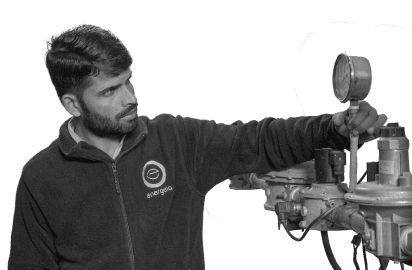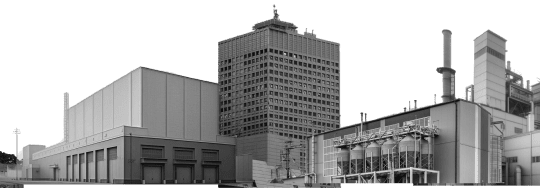The Hidden Cost of Cooling AI Infrastructure
AI is powerful—but it’s energy-hungry.
Data centers now consume nearly 3% of the world’s electricity, with energy use expected to triple by 2030 as AI workloads scale rapidly (International Energy Agency, 2023). In India itself, demand from data centers is projected to double by the end of the decade, crossing 2.5 GW (JLL & USISPF, India Data Center Report, 2023).
While hyperscalers dominate headlines, AI-native companies face this challenge every day. Cooling high-performance systems 24/7 isn’t optional—but doing it inefficiently costs a fortune.
That was the problem facing the engineering team at a leading digital transformation company in Noida. Their campus runs AI-powered platforms for automation, content, and communication—and their HVAC system was working overtime.
Their cooling energy bills for AI infrastructure kept rising. The equipment was aging. And no real-time data meant no clear answers.
So they turned to Energeia—to uncover where their systems were wasting energy and build a roadmap to take smarter control of it.
Key Stats
Annual Monetary Savings
Annual Energy Savings
CO₂ Emission Reduction
Customer Overview
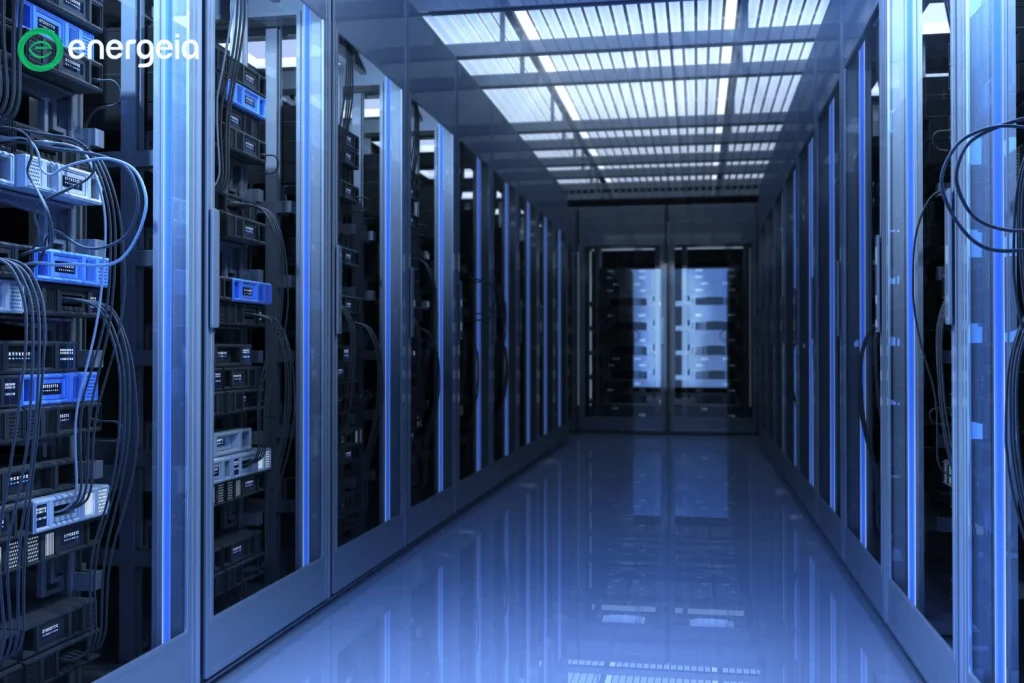
- Location: Noida, India
- Facility: Corporate campus for AI-led digital transformation services
- Operational Load: 24/7 operations supporting AI workloads, data processing, and enterprise software environments
- Cooling Infrastructure:
- 2 x 185 TR air-cooled chillers
- 3 constant-speed primary pumps
- 46 AHUs spread across multiple floors
- Multiple UPS systems supporting critical systems
With comfort and thermal reliability directly linked to productivity and equipment longevity, the HVAC system plays a central role in the facility’s performance—and energy footprint.
The Challenge
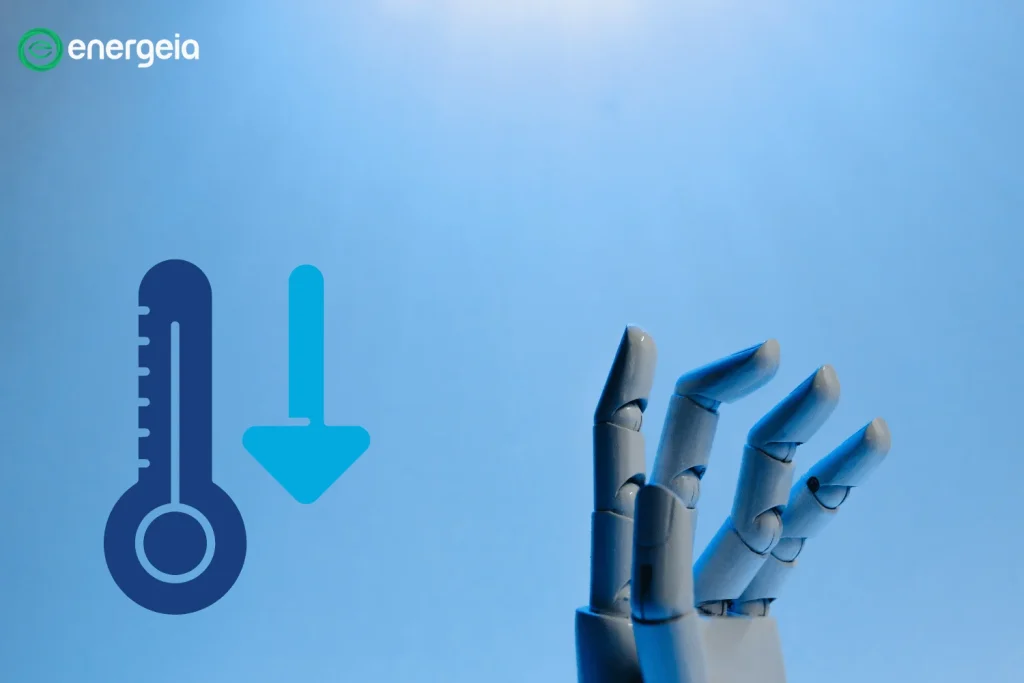
A Need for Visibility Before Investment
- High Energy Consumption: The building consumed 18.3 lakh kWh annually, with HVAC as one of the largest contributors.
- Chiller Under-performance: One chiller was running at 1.38 kW/TR, well above modern efficiency benchmarks.
- No Real-Time Monitoring: Without visibility into live data, the operations team couldn’t pinpoint the inefficiencies.
- Manual Maintenance Cycles: Lack of predictive insights led to over-maintenance in some areas—and neglect in others.
- CapEx Hesitation: Leadership needed a clear, ROI-backed roadmap before approving any upgrades.
The Solution
A Data-Driven Audit, Not a Blind Retrofit
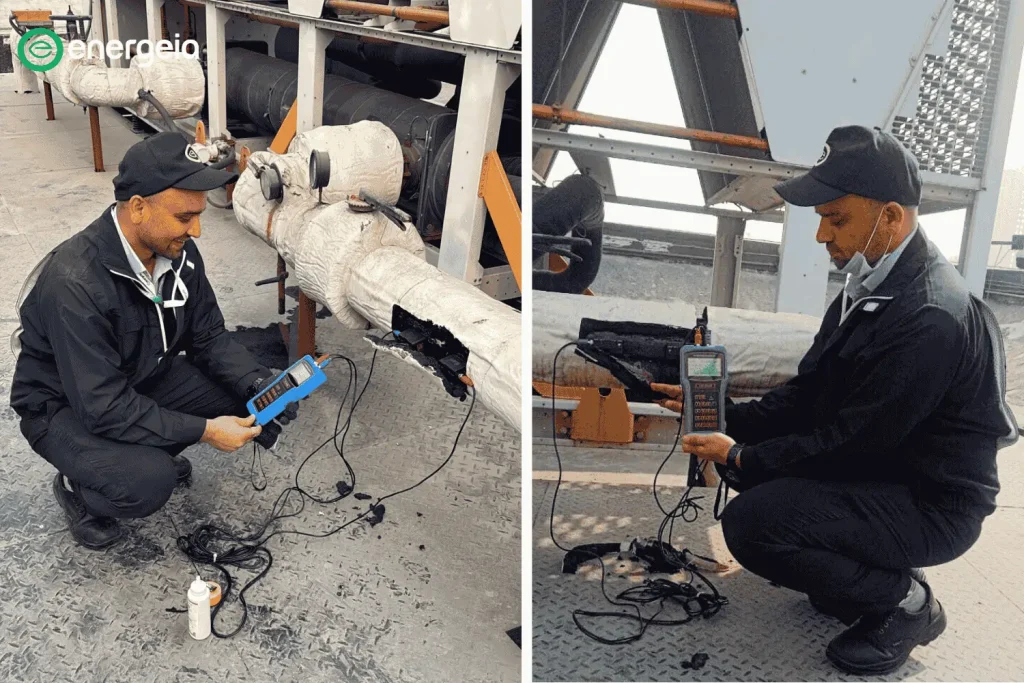
Energeia deployed its IoT-based Energy Monitoring System (EMS) to conduct a detailed audit of the facility’s HVAC systems.
🔍 Step 1 – Real-Time Data Collection
- Our energy engineers installed energy meters, flow sensors, and temperature sensors across chillers, pumps, and AHUs
- The energy monitoring system (EMS) collected per-second performance data over multiple shifts and days
📊 Step 2 – Technical Analysis by BEE-Certified Experts
- Energeia’s team benchmarked chiller efficiency, AHU motor health, and pump operation against BEE and ASHRAE standards
- Our energy data analysts modeled part-load behavior and energy-saving potential under optimized conditions
📝 Step 3 – Recommendations
- We shared a detailed report outlining actionable savings opportunities, ROI forecasts, and project paybacks
Key Findings & Recommendations
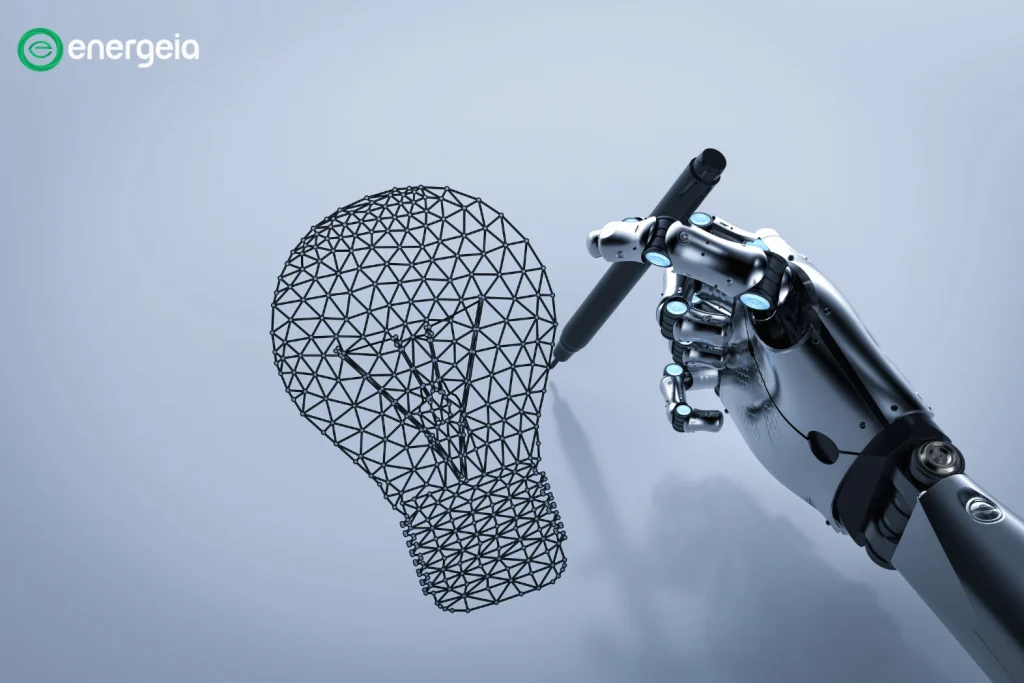
Chiller Inefficiency:
- Finding: One unit running at 1.38 kW/TR
- Recommendation: Retrofit or replace with a high-efficiency model to reduce load by 20%
AHU Improvements:
- Finding: Belt friction and under-optimized fan operations
- Recommendation: Install cogged belts and VFDs where applicable
Pump System Losses:
- Finding: Monoblock pumps lacked control logic and ran continuously
- Recommendation: Right-size pumps and introduce VFDs
Power Factor Issues:
- Finding: PF between 0.90–0.94 at LT panels
- Recommendation: Replace the larger existing capacitor with smaller capacitors to reduce penalties and losses.
Note: This summary provides an overview of our findings and recommendations. The energy audit report we shared with the customer includes real-time data, thorough analysis, and clear technical recommendations for each point we discussed.
Looking Ahead: The ESCO Financing Option
As the company decides to how to implement these recommendations, Energeia also offers to execute the full solution under its Shared Savings ESCO Model:
- Zero CapEx Required
- Energeia funds and executes the entire project
- The customer pays only from realized energy savings
- Maintenance and operational excellence guarantee included
This model remains available as a low-risk path forward when the company chooses to implement the recommended upgrades.
Curious about ESCOs? Learn more here.
Ready to Uncover Hidden Cooling Losses?

With a strong track record of delivering energy-savings, Energeia has completed 1500+ projects across multiple sectors including commercial buildings, pharmaceutical companies, and food & bev facilities, with notable customers like Emmar, Hollister, PepsiCo, The Leela Hotels and more.
📞 Book a Free Energy Appraisal Today: +91 9319271849
✉️ Email: sales@energeia.in


